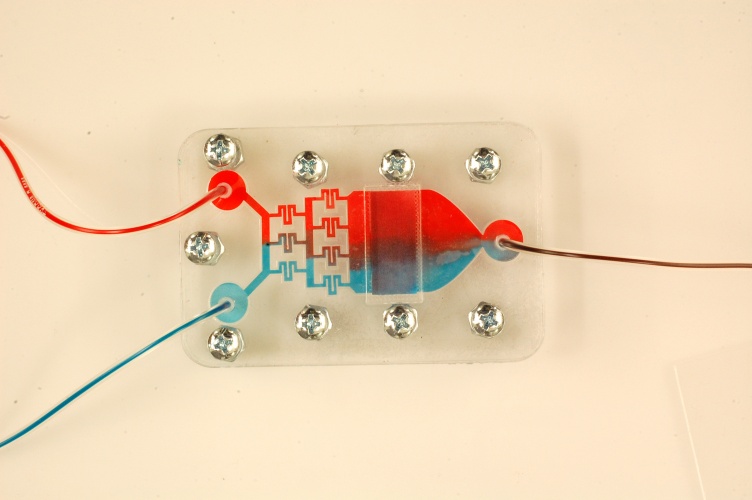Risk-on-a-chip device could help prevent breast cancer
Scientists at Purdue University are developing a ‘risk-on-a-chip’ biomedical device that should shed light on the nature and development of breast cancer.

(Credit: Purdue University)
The device consists of a small plastic case with several thin layers and an opening where a portion of tissue can be inserted. Risk factors for cancer are simulated within the micro environment, mimicking what happens in a living organism.
“We want to be able to understand how cancer starts so that we can prevent it,” said Sophie Lelièvre, a professor of cancer pharmacology at Purdue.
To develop the device, Lelièvre teamed up with Babak Ziaie, a professor of electrical and computer engineering at Purdue. Their work so far has focused on two particular risk factors for cancer: oxidative stress and tissue stiffness. The former is a chemical reaction brought on by lifestyle (diet, alcohol, smoking etc) that can alter the genome of the breast and increase the risk of cancer. Risk-on-a-chip mimics oxidative stress by producing those molecules in a cell culture system that simulates the breast ducts.
Register now to continue reading
Thanks for visiting The Engineer. You’ve now reached your monthly limit of news stories. Register for free to unlock unlimited access to all of our news coverage, as well as premium content including opinion, in-depth features and special reports.
Benefits of registering
-
In-depth insights and coverage of key emerging trends
-
Unrestricted access to special reports throughout the year
-
Daily technology news delivered straight to your inbox










Water Sector Talent Exodus Could Cripple The Sector
Well let´s do a little experiment. My last (10.4.25) half-yearly water/waste water bill from Severn Trent was £98.29. How much does not-for-profit Dŵr...